Designer Porky Hefer’s debut architectural project hatches in Namibia
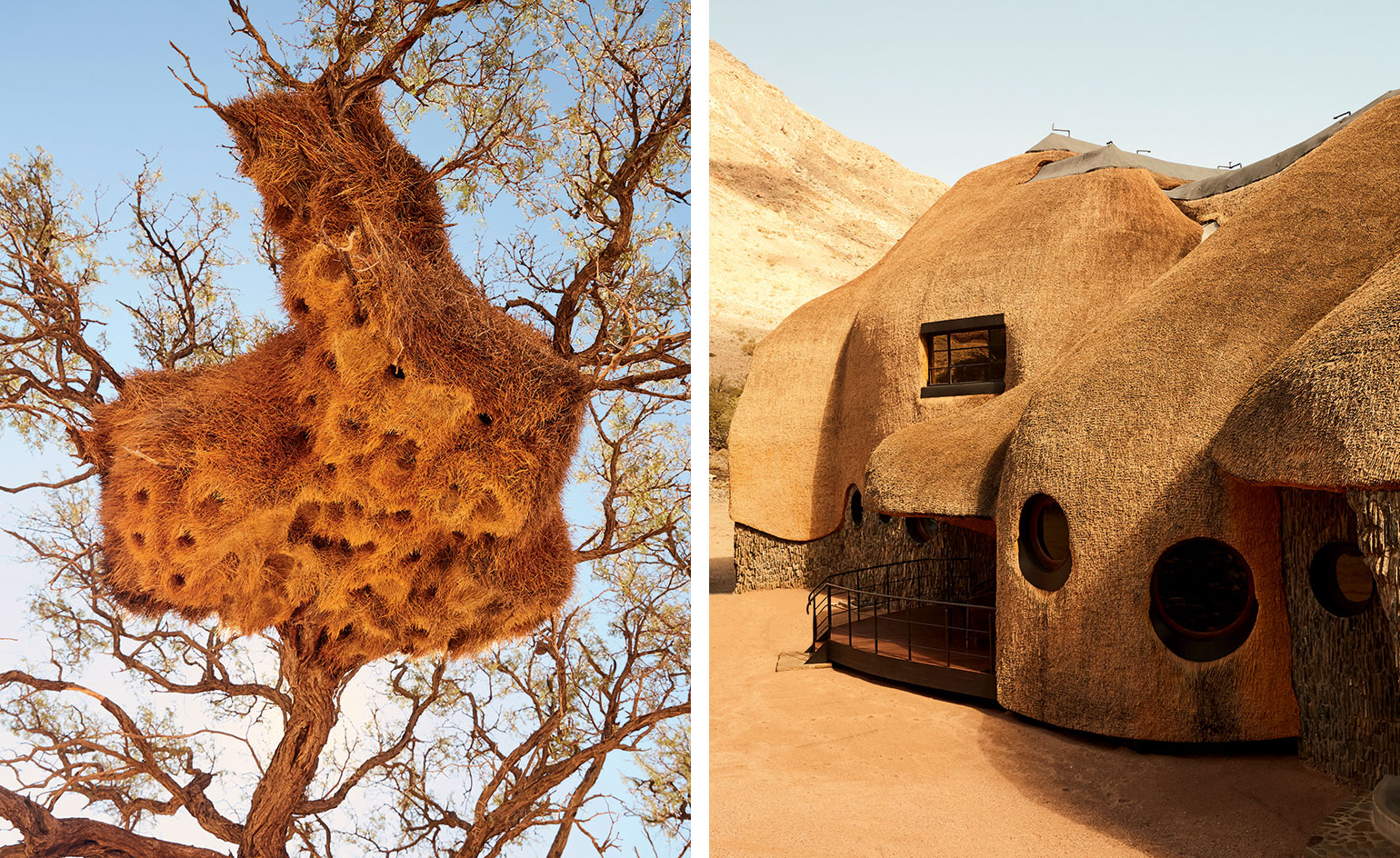
From the gates of Namib Tsaris Conservancy, a private reserve located in a remote valley of the Namib Desert, it’s a 30km drive to The Nest. The journey is best undertaken during the day, for at night, stars alone illuminate the dirt roads, and leopards and hyenas prowl the land. On approach, a swimming pool and a grid of solar panels are the most visible signs of human life, for the isolated hideaway itself, with its thatched roof and soft lighting, is a barely-there silhouette in the landscape.
The nearest town is 125km away and wildlife, which congregates around a floodlit watering hole, provides the only company. Seclusion is just one of The Nest’s selling points. On hand are a local chef, butler and guide, as well as a helipad. It’s a short flight to the World Heritage Site of Sossusvlei, home to glowing red sand dunes, and Deadvlei, a graveyard of 700-year-old camel thorn trees.
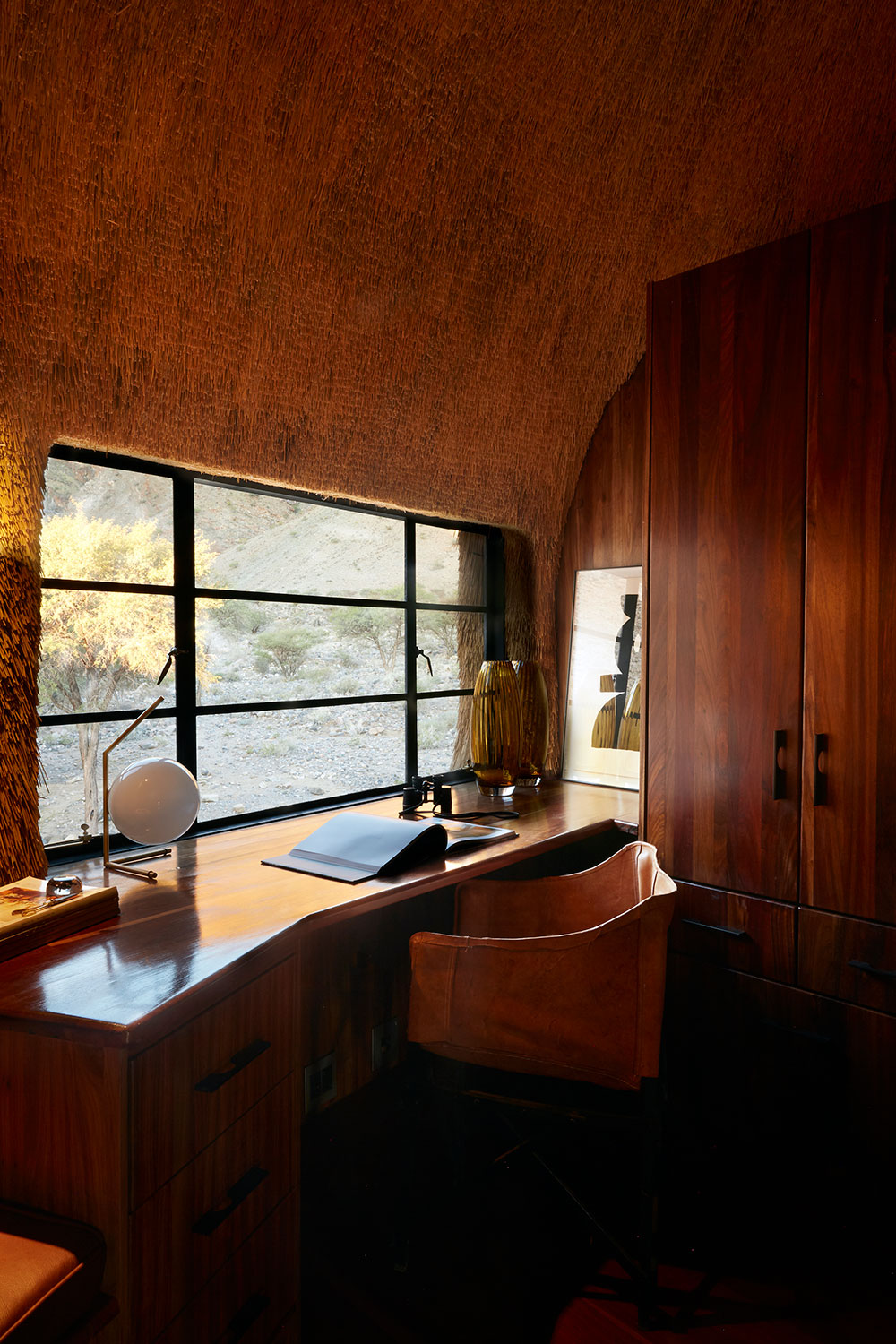
A custom-built desk and wardrobe in one of The Nest’s three en-suite double bedrooms. Like most of the furniture, it was built on site by local artisans using hardwood from Angola.
It was on this same spot that, eight years ago, South African designer Porky Hefer and Swen Bachran, owner of the 24,000-hectare conservancy, camped out. They had come to survey the site as a location for a dwelling that could be a scaled-up version of the ‘nests’ – pod-like furniture – that Hefer was becoming known for (last year, one of his ‘Humanest’ hanging chairs, handwoven in kooboo cane, sold at Sotheby’s for £12,500).
While they dreamed up their crazy scheme (Hefer had never designed a house before and materials would need to be transported from 480km away), they observed the vast, labyrinthine nests of the local sociable weaver birds. Such nests can house hundreds of birds, who gather in different ‘rooms’ – outer, cool spaces during the day, and warm, inner areas when night-time temperatures plummet. Why not apply their efficient techniques to a house for humans, thought Hefer?
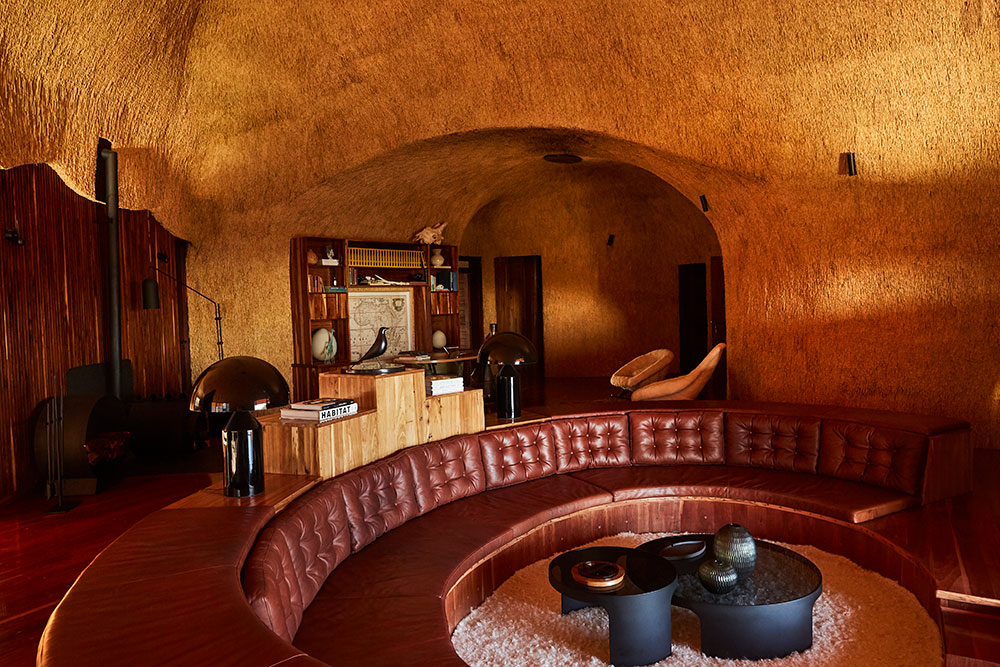
In the living area, a sunken lounge with leather banquette pays homage to the organic and experimental work of the late American architect Bruce Goff.
‘It was an organic process. We built everything on site using local artisans and materials in the traditional style of the area. Building off the grid was both a difficulty and a blessing,’ explains the designer, who spent three years finding a local builder up to the task. ‘It meant we could do what we wanted but logistically it was insane.’ Audience participation was also a hindrance: baboons dismantled the outdoor shower and a leopard cub shacked up under the foundations.Hefer and his wife, designer and curator Yelda Bayraktar, began work on the interiors, later handing over to Cape Town specialist Maybe Corpaci. They opted for ‘built-in furniture, much like that of a nest, accented by a few great pieces with a modernist touch’.
RELATED STORY
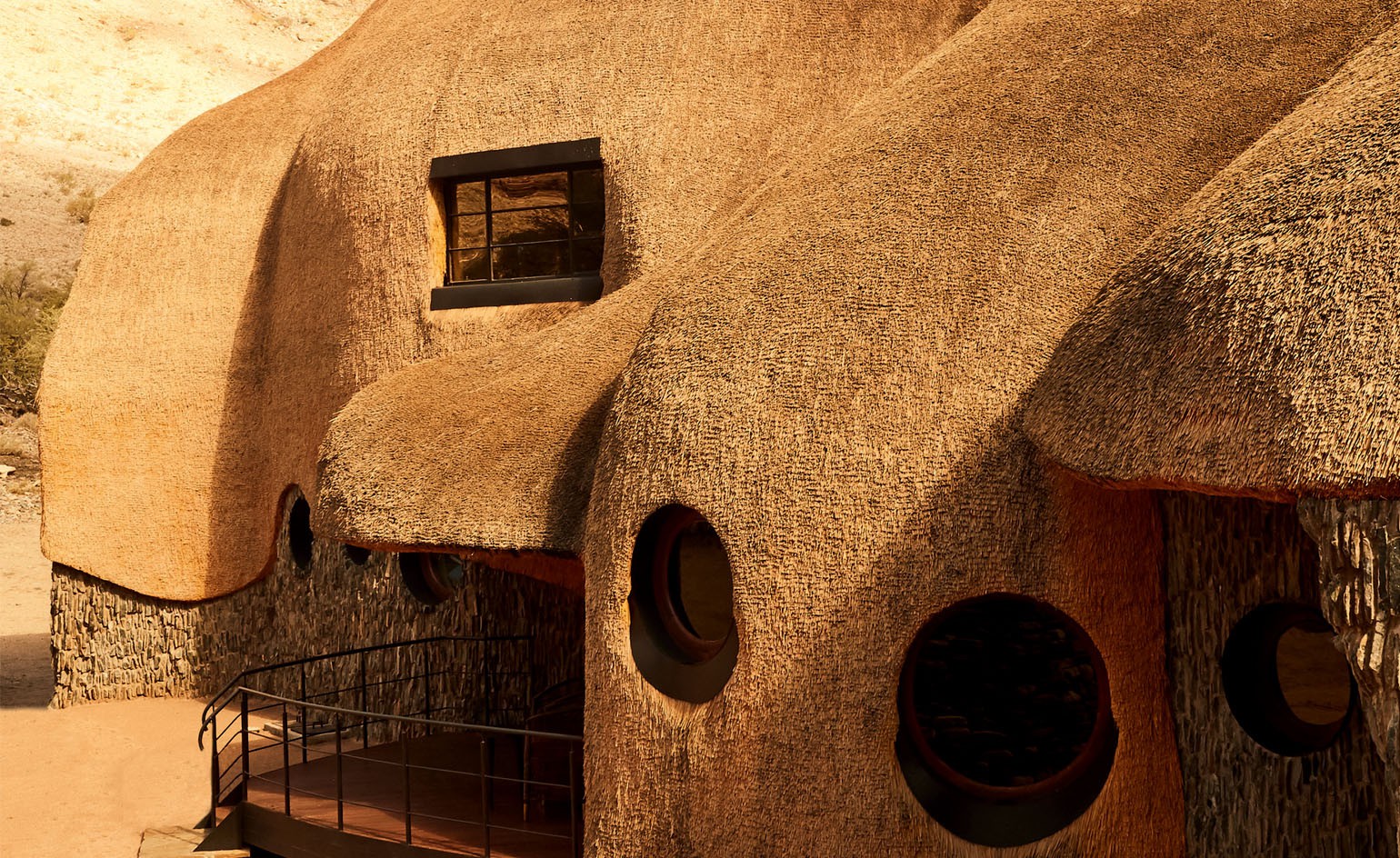
While Hefer drew every last detail, Bachran was on a quest of his own. In 2010 he had bought the original plot of land, a former farm, as a weekend escape from Windhoek and Cape Town, where he runs property businesses. He soon acquired more land and, ‘fuelled by a passion for nature’, he set about ‘rehabilitating the results of a hundred years’ worth of bad farming practice’. The area was once populated by abundant wildlife, thanks to its almost year-round natural pools and waterfalls. Bachran installed new roads, removed miles of fencing and is gradually reintroducing antelopes, zebras, giraffes, big cats and rodents. There are plans to reintroduce the endangered black rhino too.
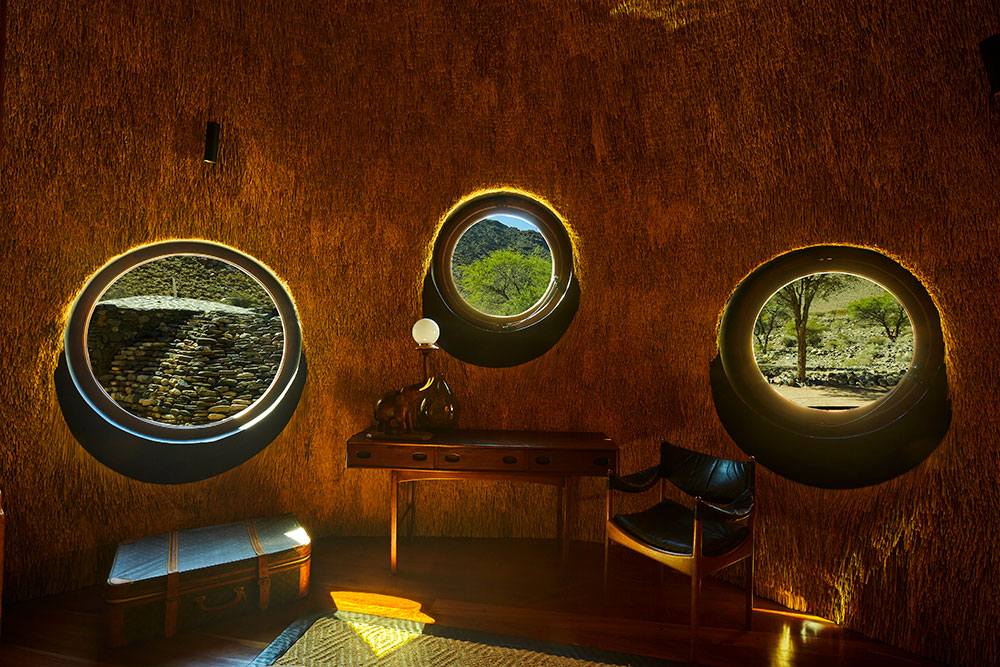
Seen in the living room, the thatching is made from reeds sourced from the banks of the Zambezi river in northern Namibia, and provides natural insulation.
Bachran will continue to grow the reserve. Hefer, meanwhile, is working on more vernacular houses elsewhere. Next up is a coconut palm-thatched treehouse for a new resort in the Maldives, and some ‘Tadao Ando-esque designs’ in Rwanda, where he is working with local architects who build with sticks and mud using ancient techniques.
While the Namibian hideaway was taking shape, so too was Hefer’s reputation: his nests and, more recently, his oversized seating pods depicting endangered species, handmade from eco-friendly materials, have propelled him onto the world stage as an ethical designer with a mission. ‘For years, I pitched my nests to safari camps and lodges. People didn’t get it, but I kept on trucking. Finally, I met someone mad enough to say yes,’ he says. ‘Swen and I are a pair of obsessives who never take no for an answer.’
The Nest won the Best New Private House category in the 2019 Wallpaper* Design Awards. For more information, see the Wallpaper* Design Awards 2019.
As originally featured in the November 2018 issue of Wallpaper* (W*236)

The Nest’s thatched roof is supported by a steel frame and stone walls; the structure took five years to complete.

Local kiaat hardwood paneling is softened with skins and shag piles in a bedroom.
INFORMATION
The Nest is available to rent. For more information, email info@namibtsaris.com and visit the Animal Farm website
Receive our daily digest of inspiration, escapism and design stories from around the world direct to your inbox.
Emma O'Kelly is a freelance journalist and author based in London. Her books include Sauna: The Power of Deep Heat and she is currently working on a UK guide to wild saunas, due to be published in 2025.
-
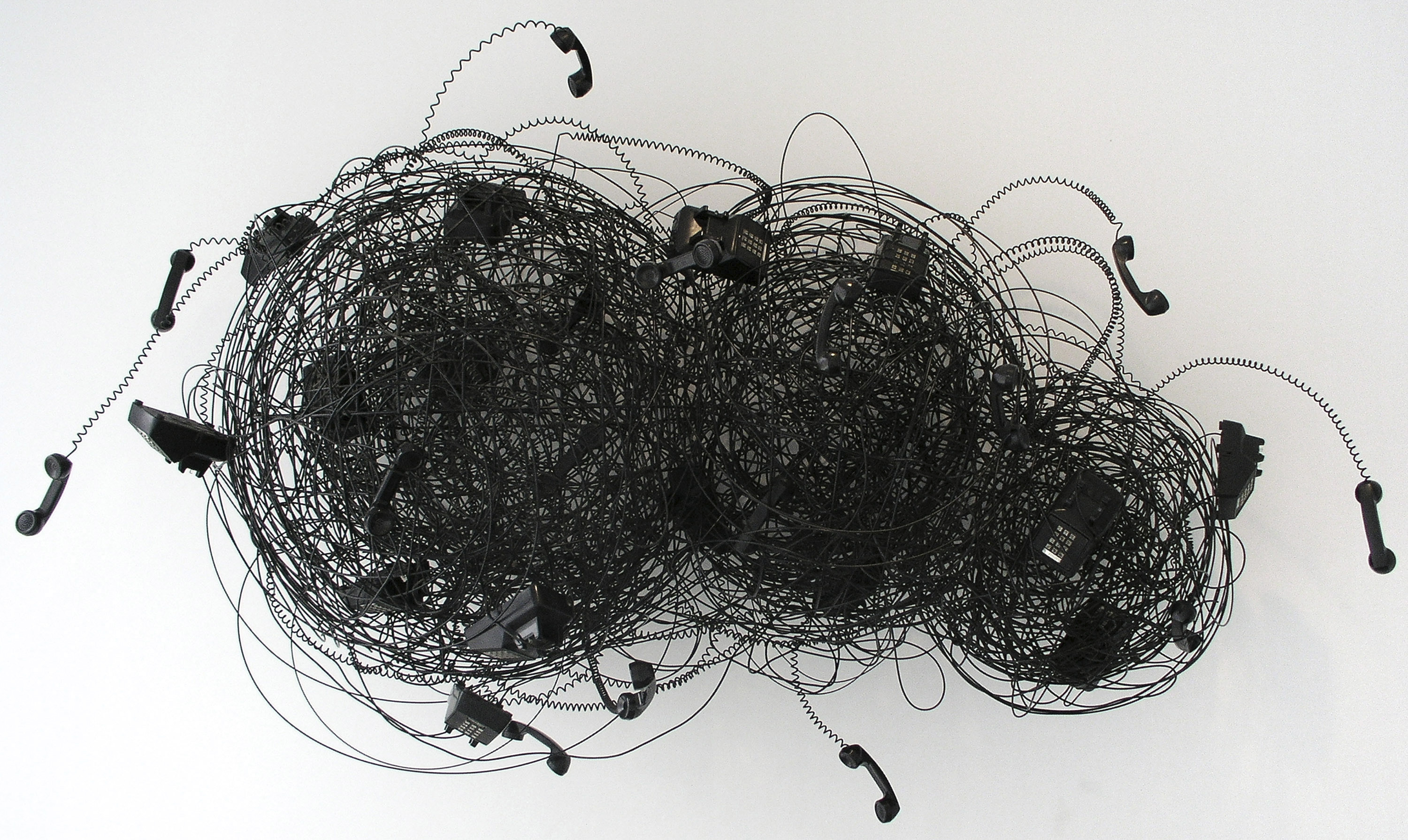 Robert Therrien's largest-ever museum show in Los Angeles is enduringly appealing
Robert Therrien's largest-ever museum show in Los Angeles is enduringly appealing'This is a Story' at The Broad unites 120 of Robert Therrien's sculptures, paintings and works on paper
-
 The Wallpaper* style team recall their personal style moments of 2025
The Wallpaper* style team recall their personal style moments of 2025In a landmark year for fashion, the Wallpaper* style editors found joy in the new – from Matthieu Blazy’s Chanel debut to a clean slate at Jil Sander
-
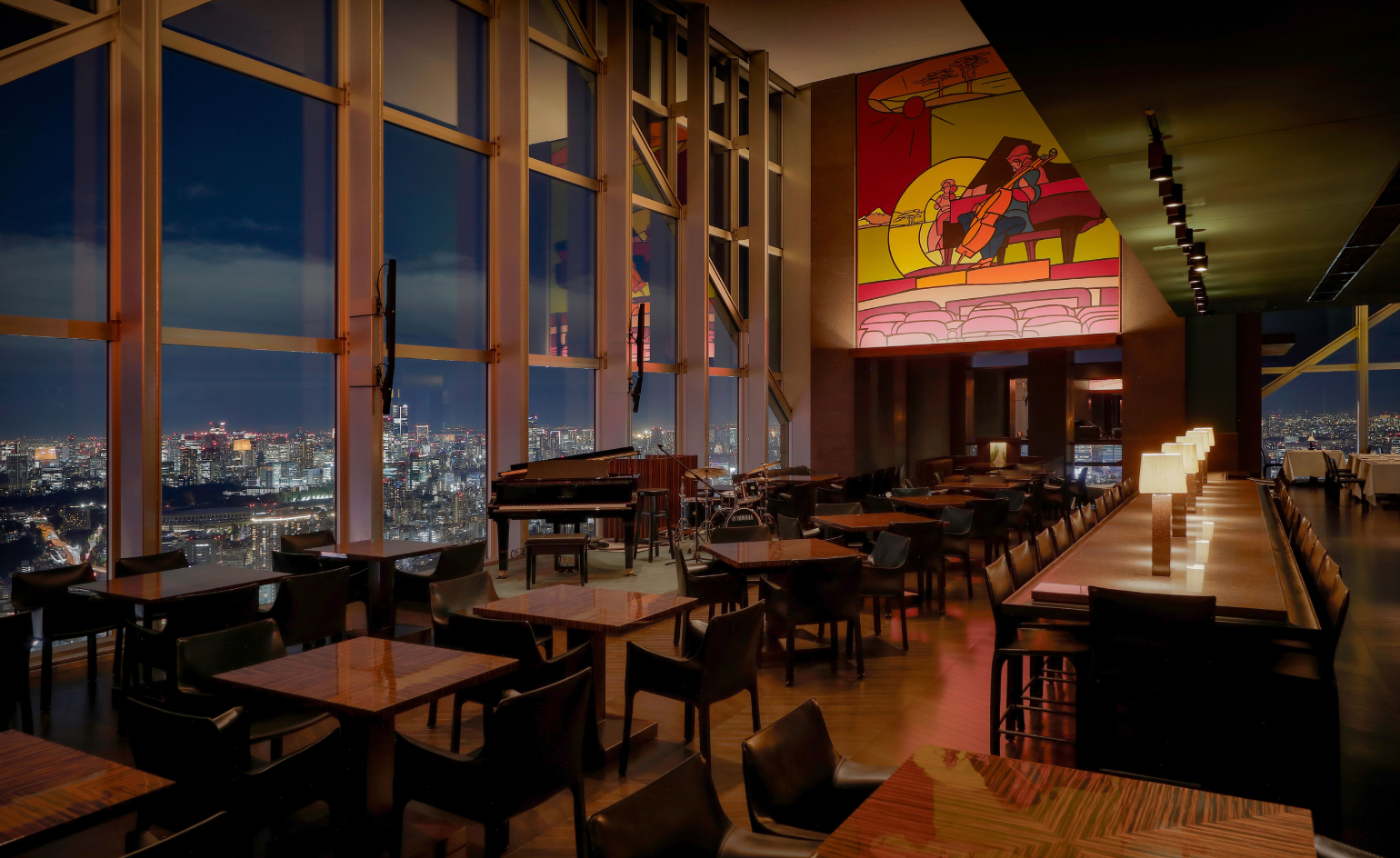 Tokyo’s most cinematic stay reopens as an exercise in architectural self-control
Tokyo’s most cinematic stay reopens as an exercise in architectural self-controlPark Hyatt Tokyo and Studio Jouin Manku demonstrate how design can evolve without erasing memory, balancing modernist heritage with contemporary comfort
-
 Meet Rural Futurisms, 'agents for catalytic change' in South Africa's landscape design field
Meet Rural Futurisms, 'agents for catalytic change' in South Africa's landscape design fieldLed by Lesego Bantsheng, the collective is challenging conventional ideas of landscape by reimagining how rural communities connect with heritage, ecology and design
-
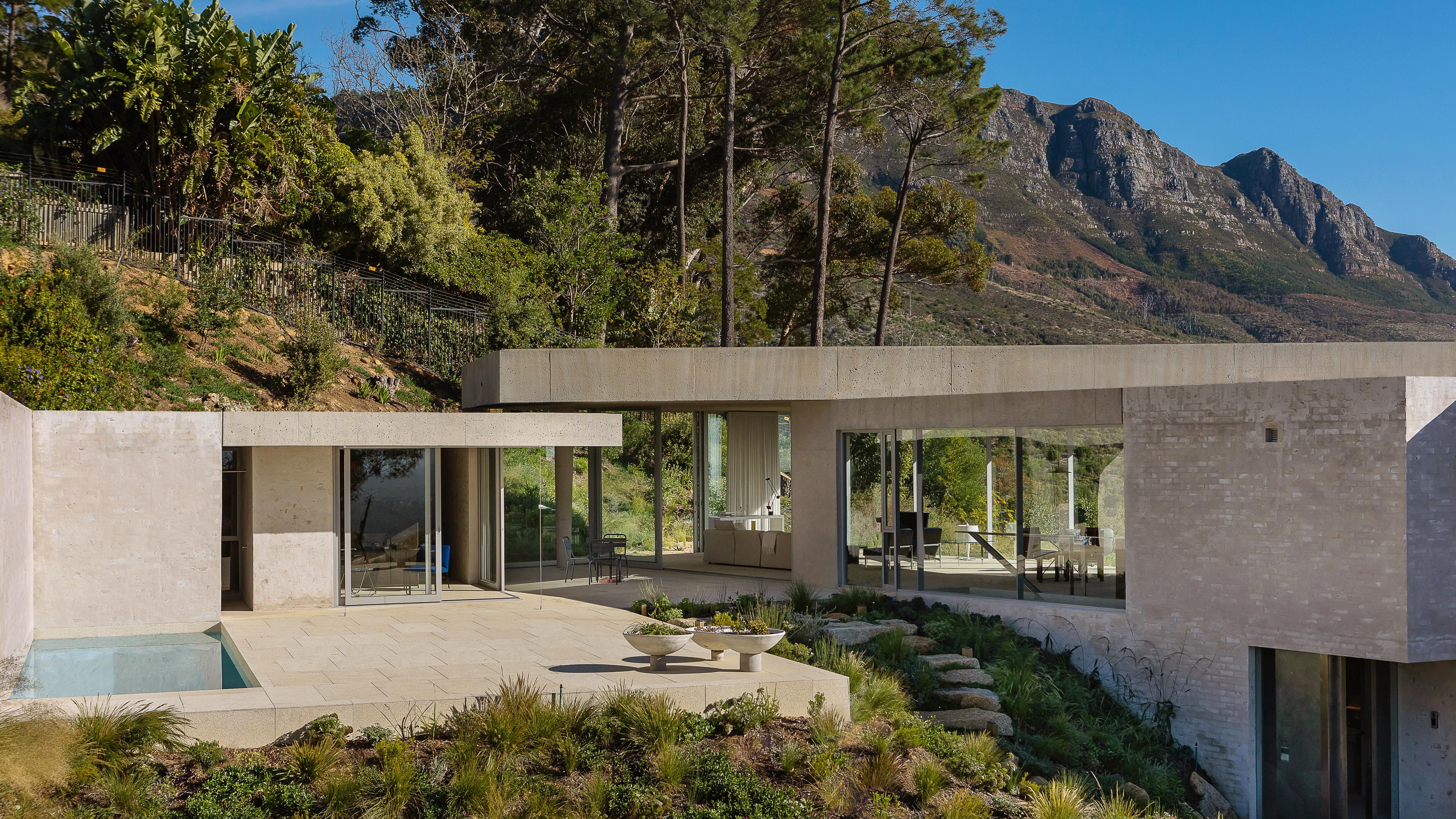 Mountain House is a contemporary South African hillside retreat
Mountain House is a contemporary South African hillside retreatArchitect Chris van Niekerk has designed a private mountain house that nestles into its site, providing space, views, and a sense of time and evolution
-
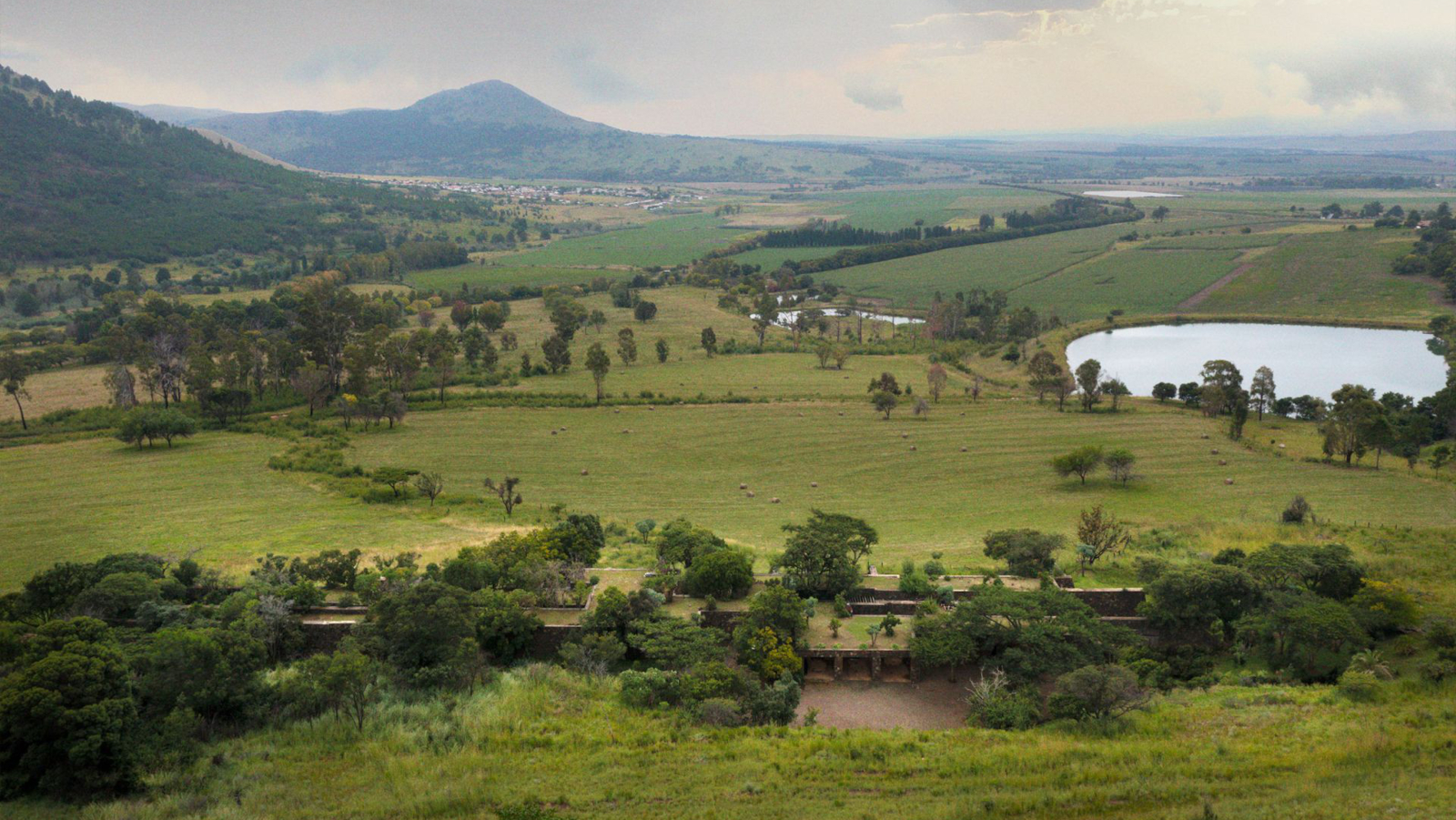 Modernist Coromandel farmhouse refreshed by Frankie Pappas, Mayat Hart and Thomashoff+Partner
Modernist Coromandel farmhouse refreshed by Frankie Pappas, Mayat Hart and Thomashoff+PartnerAn iconic Coromandel farmhouse is being reimagined by the South African architectural collaborative of Frankie Pappas, Mayat Hart and Thomashoff+Partner
-
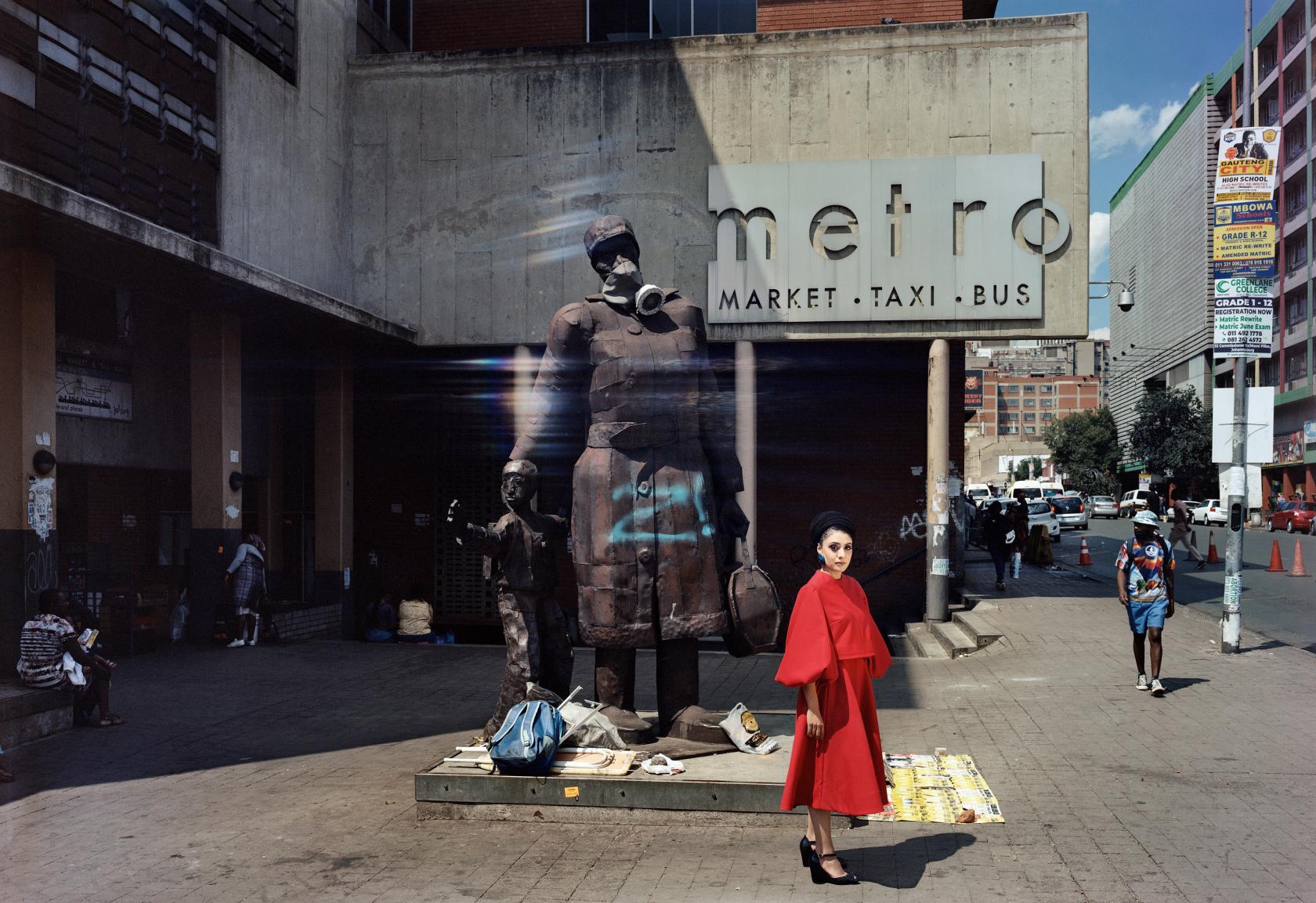 At home with Sumayya Vally
At home with Sumayya VallySouth African architect Sumayya Vally of Counterspace talks to us about Johannesburg, Geoffrey Bawa, and how if she weren't an architect, she'd be a storyteller
-
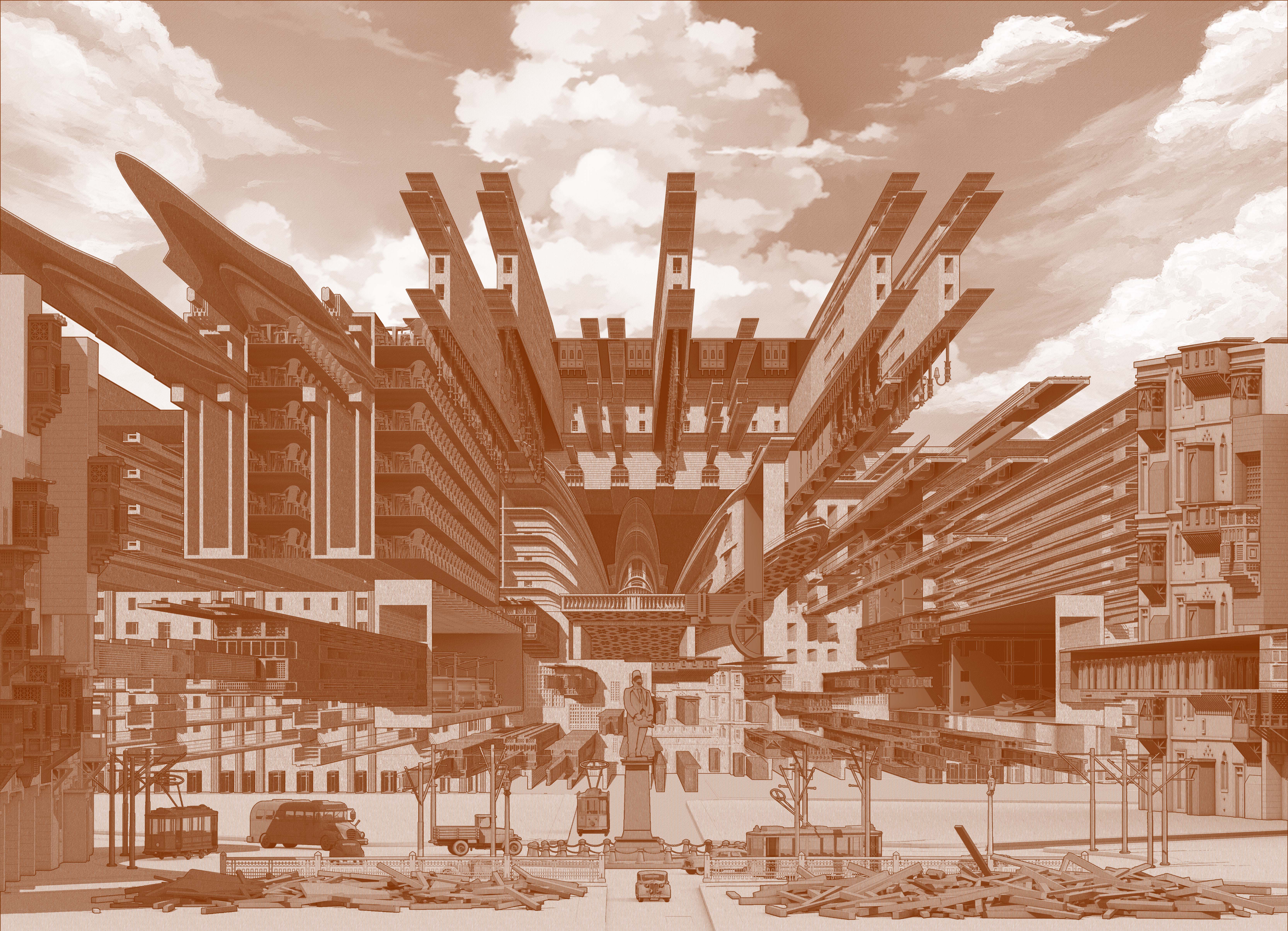 Kamal Ranchod uses architectural drawing to decolonise Egyptian history
Kamal Ranchod uses architectural drawing to decolonise Egyptian historyOur Next Generation 2022 showcase shines a light on 22 outstanding graduates from around the globe, in seven creative fields. Here, we profile Kamal Ranchod, from the University of Johannesburg’s Graduate School of Architecture, South Africa
-
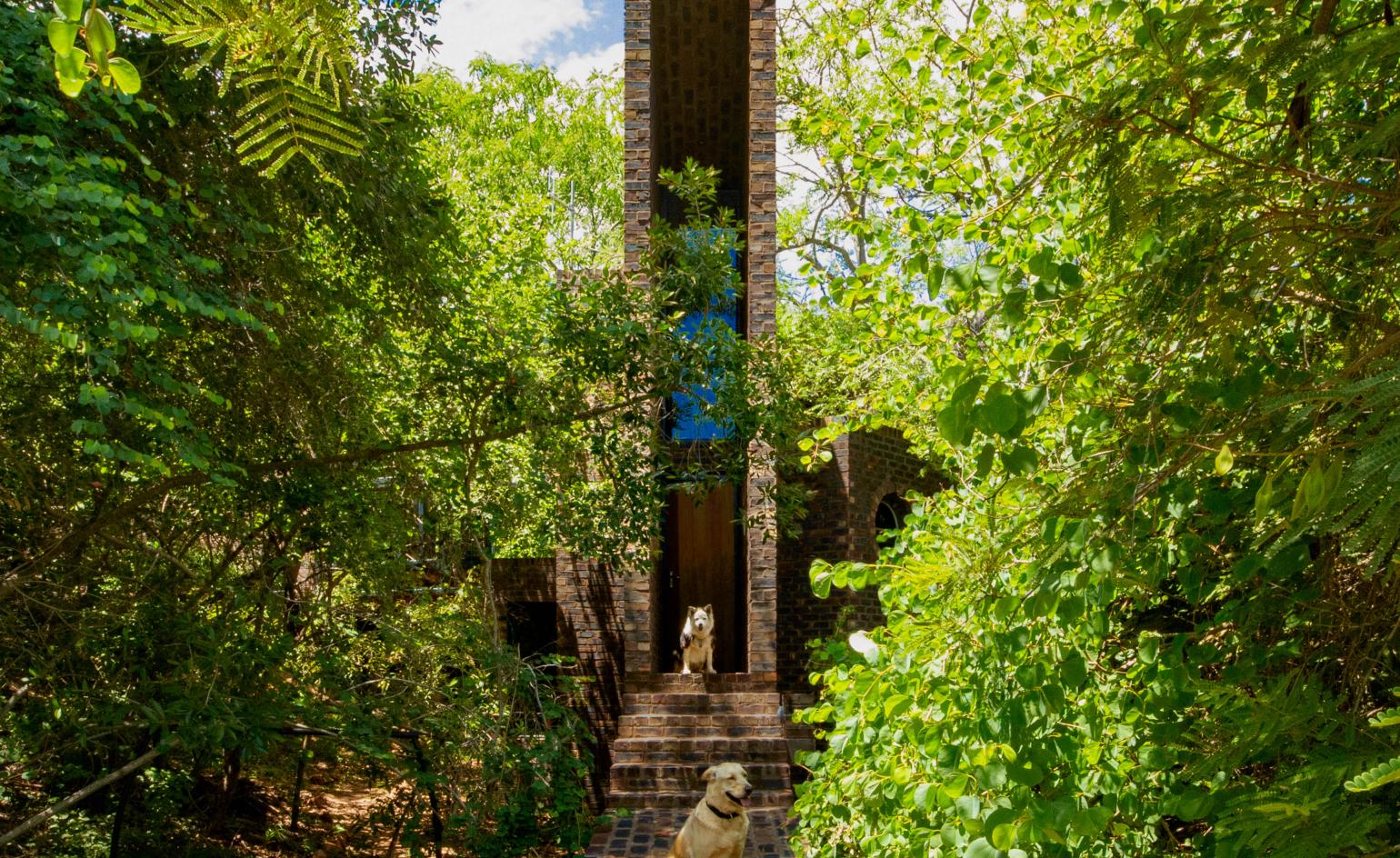 Architects Directory 2020: Frankie Pappas, South Africa
Architects Directory 2020: Frankie Pappas, South AfricaEstablished in 2019 by a group of like-minded architects and designers in Johannesburg, Frankie Pappas is a ‘collection of brilliant young minds that do away with personal egotisms in order to better find remarkable solutions to fascinating problems,’ explain the founders – who prefer to remain anonymous. Following the mantra ‘wonderfully similar, beautifully different’, the collective has completed various residential projects, including the sculptural brick volumes of House of the Big Arch in Waterberg.
-
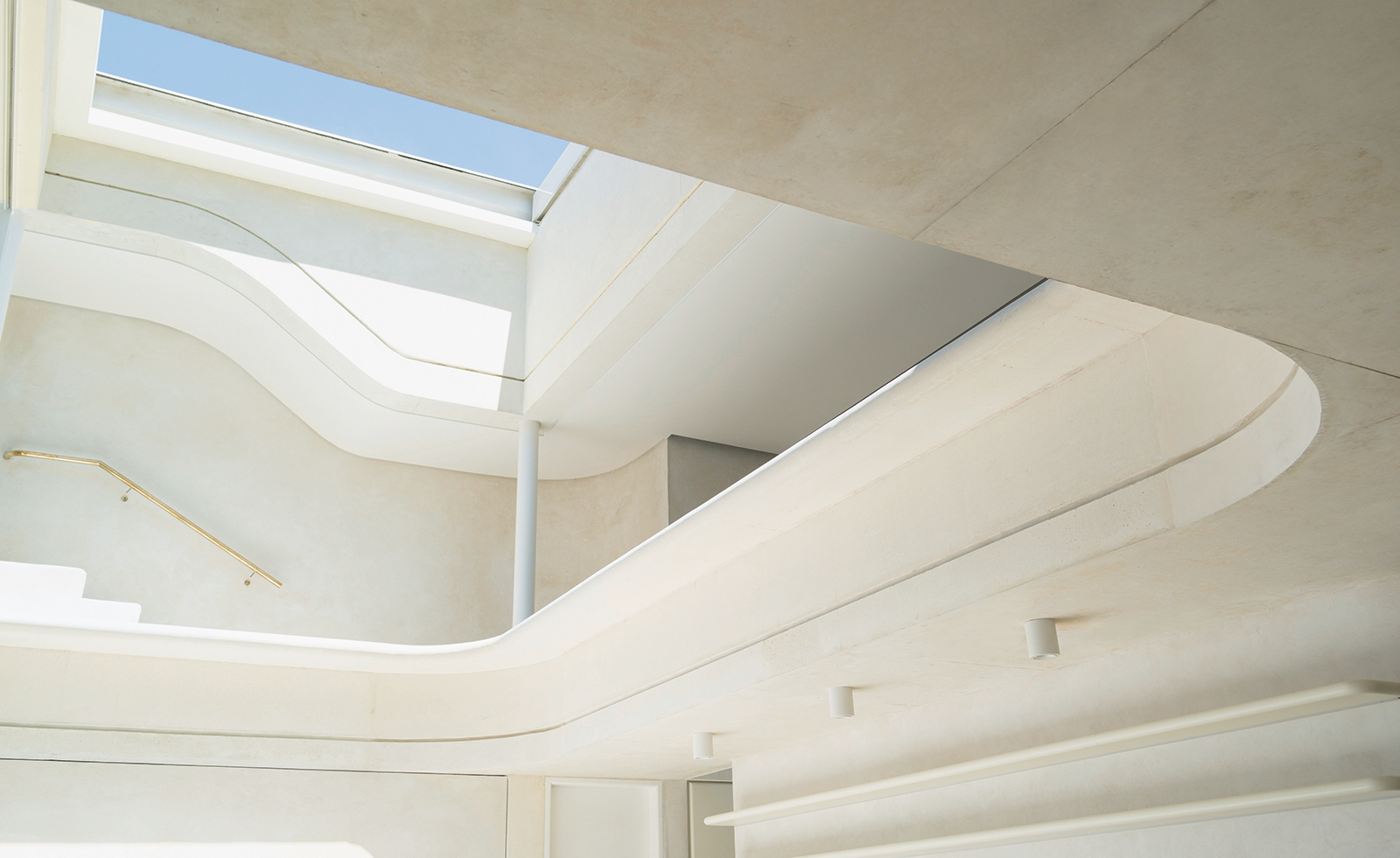 Noero Architects’ Cape Town beach house breaks the glass box mold
Noero Architects’ Cape Town beach house breaks the glass box moldCape Town-based architecture studio Noero Architects wrestled with strict planning regulations to craft an enviable beach house
-
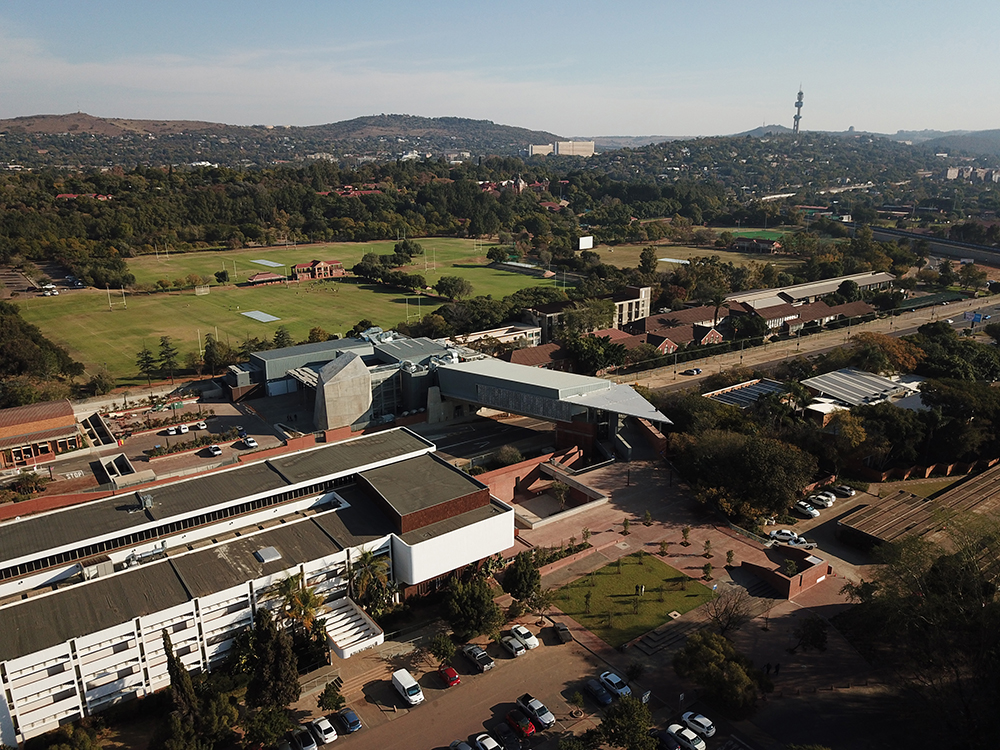 Pretoria’s Javett Arts Centre takes its cues from the local culture and landscape
Pretoria’s Javett Arts Centre takes its cues from the local culture and landscapeThe University of Pretoria in South Africa gets new art centre, Javett UP, courtesy of Matthews + Associates Architects